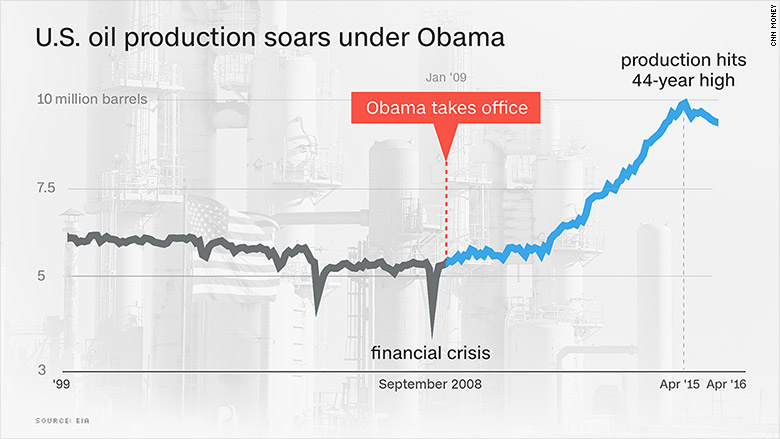
Rex Tillerson's replacement at ExxonMobil is already taking more of an "America First" stance.
Just two weeks after Tillerson left to focus on his nomination as President-elect Donald Trump's secretary of state, Exxon CEO Darren Woods is making a quick mark on the company by purchasing a slew of U.S. shale oil resources.
On Tuesday, Exxon (XOM) said it is spending $5.6 billion to buy assets in the shale oil hotbed of the Permian Basin, which stretches from Texas to New Mexico. It is the company's biggest deal since 2010.
The purchase from the Bass family of Texas represents an effort by Woods to help Exxon catch up after it fell badly behind in the U.S. shale oil boom during Tillerson's decade in charge.
Instead of seizing on the explosion of American oil production, Tillerson trained Exxon's sights on foreign oil projects in Russia, Iraq and off the coast of Africa. Similarly, Exxon's other big rival Chevron (CVX) was also late to the shale oil party. That left the field open to younger, and more nimble, oil companies that flourished during one of the biggest oil booms in history, one that has changed the global map of oil producing countries in the past decade.

Related: Tillerson's Exxon didn't put America first
Exxon now says that the latest purchase has the potential for 3.4 billion barrels of oil equivalent output. Exxon said the resources lie in a "highly prolific, oil-prone" part of the Permian Basin and will double the company's assets in the Permian.
"ExxonMobil has been late to invest in shale to their detriment," said Brian Youngberg, an analyst who covers Exxon at Edward Jones.
But Youngberg said the deal shows Exxon is "trying to play catch-up and wants the highest quality" assets.
The Permian has proven to be the most resilient part of America's vast shale oil empire. Even during today's relatively low prices -- the current price of $53 a barrel is just half the level of three years ago -- frackers in the Permian are still pumping away profitably.
Related: Oil giant Exxon profits crash 58%
Woods, the new Exxon CEO, noted that these shale oilfields have a track record of generating "attractive returns in a low-price environment." He said the investment will bolster the company's presence in the "dominant U.S. growth area" for onshore oil pumping.
It's the biggest acquisition for Exxon since the massive 2010 deal to buy XTO Energy for $41 billion. XTO was a major natural gas producer and today the Exxon division pumps lots of shale oil in North Dakota and Texas.
Of course, Exxon is a bit more strapped for cash these days. Exxon's long-term debt has quadrupled to nearly $30 billion even as its profits have tumbled to 17-year lows amid the crash in oil prices.
Exxon's financial pressure has resulted in the loss of its once-perfect AAA credit rating.
That explains why Exxon is paying for the Permian assets by using the company's stock.


